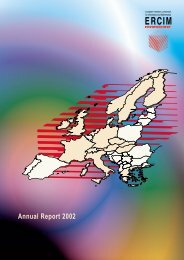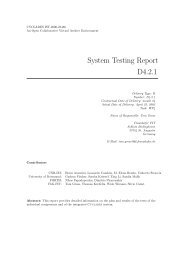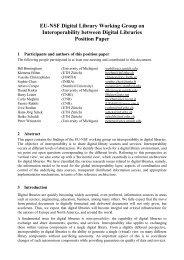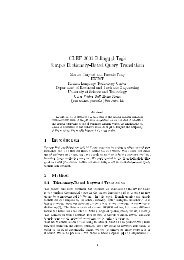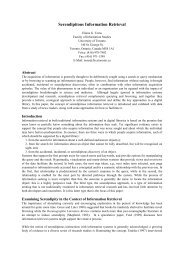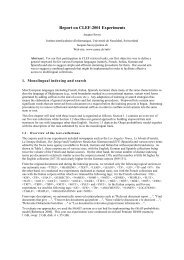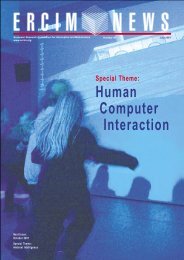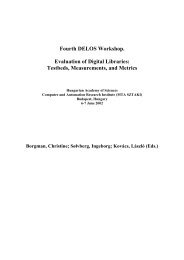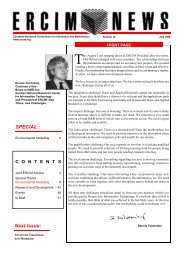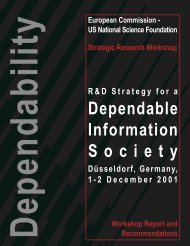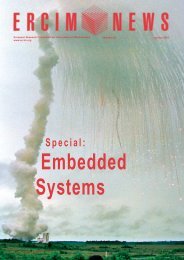Towards a Platform for Widespread Embedded Intelligence - ERCIM
Towards a Platform for Widespread Embedded Intelligence - ERCIM
Towards a Platform for Widespread Embedded Intelligence - ERCIM
You also want an ePaper? Increase the reach of your titles
YUMPU automatically turns print PDFs into web optimized ePapers that Google loves.
54<br />
R&D AND TECHNOLOGY TRANSFER<br />
them in order to put all of them in a<br />
single image. Hence, since we can provide<br />
very detailed 3D models, colour per<br />
vertex is the best choice to preserve both<br />
geometric and colour detail. We assign<br />
to each vertex of the model the colour of<br />
the images which project on it. Since<br />
more than one image could project onto<br />
the same vertex, a major issue rises: how<br />
can we automatically 'weigh' the contribution<br />
of each photo in order to achieve a<br />
realistic result?<br />
<strong>ERCIM</strong> News No. 67, October 2006<br />
To solve this problem, we developed an<br />
application called TexTailor. Starting<br />
from the set of photos, the model and the<br />
calibration data, TexTailor automatically<br />
creates a mask <strong>for</strong> each photo, assigning<br />
a weight to each pixel. The weight is calculated<br />
by considering three main<br />
values: the angle between the normal of<br />
the vertex associated with the pixel and<br />
the direction of view, the distance<br />
between the point of view and the vertex<br />
(depth) and the distance of the pixel from<br />
Figure 2:<br />
Details of the model of a wooden<br />
statue in Benabbio (Lucca):<br />
36 photos projected on a<br />
2.5 million face model.<br />
Figure 1:<br />
An example of a 3D model (centre<br />
image) with a set of photos. The<br />
result will be the 3D model with the<br />
colour in<strong>for</strong>mation extracted from<br />
the photos.<br />
a discontinuity in the 'depth map' (that is<br />
a map where each pixel has the value of<br />
the depth of the associated vertex).<br />
These values are combined to calculate a<br />
weight. The colour value of each vertex<br />
is a 'weighted sum' of the contributions<br />
of all images. A result achieved using<br />
this approach is shown in Figure 2.<br />
Even though the results so far are<br />
encouraging, more work is needed to<br />
improve the technique. The most<br />
promising area <strong>for</strong> future investigation is<br />
related to the estimation of the lighting<br />
environment. This can be done using<br />
known techniques (ie mirrored spheres)<br />
during the photographic campaign, or by<br />
combining image processing and analysis<br />
of geometric in<strong>for</strong>mation during the<br />
projection operation. A good estimation<br />
of lighting would prevent the projection<br />
of dark areas in photos and could also<br />
provide in<strong>for</strong>mation about the<br />
reflectance properties of the material.<br />
Link:<br />
Visual Computing Lab at ISTI-CNR:<br />
http://vcg.isti.cnr.it/joomla/index.php<br />
Please contact::<br />
Matteo Dellepiane, Marco Callieri,<br />
ISTI-CNR, Italy<br />
Tel: +39 0503152925<br />
E-mail: dellepiane|callieri@isti.cnr.it



